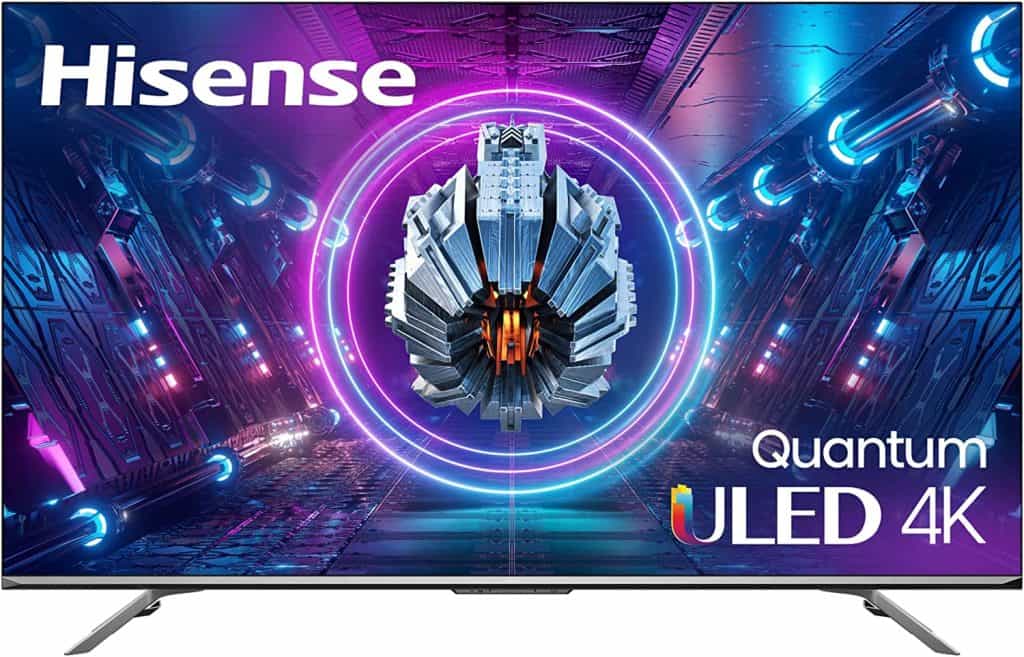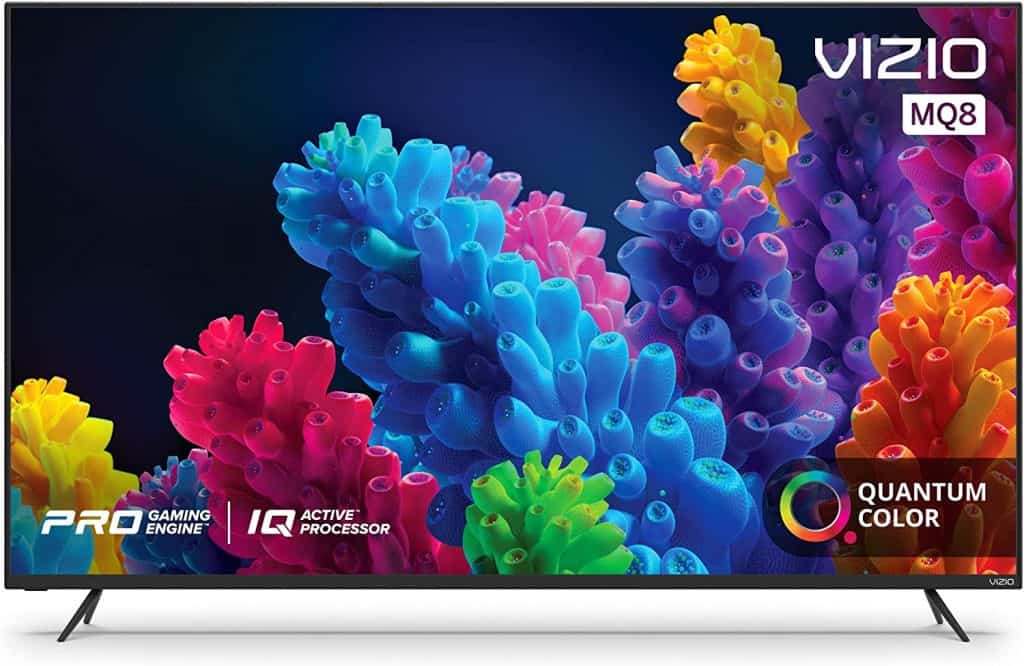Have you ever wondered which is the best budget-friendly TV brand on the market? If you have, you are on the right page! In this article, we will compare Hisense vs Vizio brands to determine which company offers the best TVs when it comes to performance, modern features, picture quality, and other important factors!
Hisense vs Vizio – Quick Comparison
Hisense is a well-known home appliance manufacturer, but they also make good, affordable TVs. Their models come with either Android or Roku smart platforms or their own VIDAA OS. They might not compete with expensive brands, but they offer great TVs with long lifespans.
Vizio is also a budget-friendly TV brand. The company manufactures great TV models with limited Smart TV capabilities. At first, their Smart TV experience was rather bad, but they have improved it over the years. For example, casting is limited to Chromecast and Airplay, and you have limited app selection.
Hisense
Pros:
- Different panel types
- Anti-glare function
- Different smart TV platforms
- Plenty of inputs
Cons:
- Low refresh rate
- Sound quality
Vizio
Pros:
- Image processor
- High refresh rates
- Affordable
- Good viewing angles
Cons:
- Smart features can be laggy
- Lack of QLED TVs
Features Face to Face
Panel Technology
Hisense offers different panels such as LCD, OLED, and QLED. OLED panel technology offers millions of pixels, of which every one of them has its own light. So, every pixel can individually be turned off or on, brightened, or dimmed.
QLED models are basically LCD TVs with LED backlighting. It means that it is an LCD TV with a layer of quantum dots. However, Vizio also offers LCD and OLED models, but it doesn’t offer QLED TVs.
Winner: Hisense
Image Processor
Hisense has a Quad-Core processor, which is responsible for its quick response and smooth video streaming. Vizio uses the IQ Active and IQ Ultra processors to provide excellent images and a high-end gaming experience.
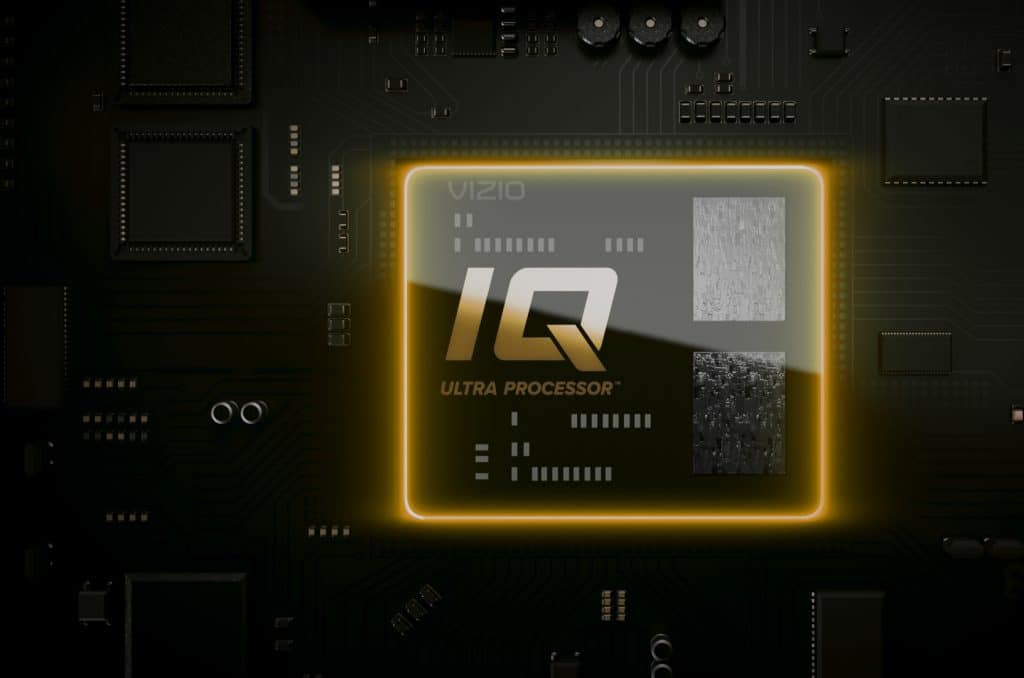
In addition to these processors, the newest generation of Vizio TVs has a ProGaming Engine.
If you are a game lover, you might want to take advantage of this technology. In other words, you can play your favorite games on 4K resolution with refresh rates of 120 Hz.
Winner: Vizio
Motion Technology
The refresh rate shows how many images a TV can display per one second. When displaying motions, a TV has to have good refresh rates. So, if you want to avoid flickering, you should choose a tv with higher refresh rates.
Today, models come with different refresh rates, and they can range from 60 to 240 Hz. With that in mind, Hisense does not excel in this category since most of their TVs offer 60 Hz refresh rates. However, they are making more efforts to include variable refresh rates to improve the gaming experience.
On the other hand, Vizio is better in this segment since it offers TVs with refresh rates of 60 Hz to 240 Hz. In addition to good refresh rate ranges, their TV models come with the Clear Action Technology. The technology reduces blurring during motion.
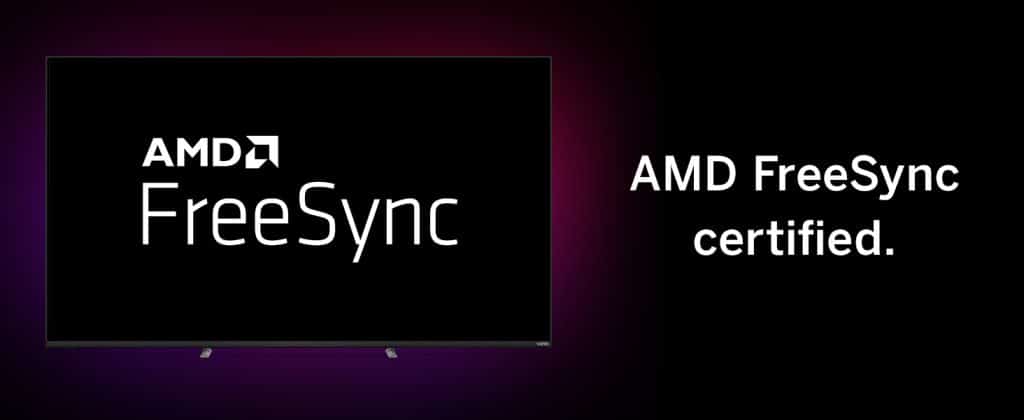
Again, Vizio is a better choice when it comes to playing games. But, you need to keep in mind Microsoft Xbox games usually run well on 60 Hz. However, Sony PlayStation games usually need 120 Hz refresh rates to run smoothly.
Winner: Vizio
Picture Quality
Contrast Ratio/Black Level
Vizio offers TVs with a better contrast ratio when compared to Hisense. This means that their models have deeper blacks for better performance when displaying dark scenes.
Winner: Vizio
Local Dimming
Hisense TVs have rather good local dimming features. Most Vizio TVs have a full array of local dimming. In other words, both of these can produce good deep blacks.
Hisense performs well in both bright and dark rooms. However, Vizio TVs, due to better contrast ratio, have excellent performance in dark environments. So, they prevail in this segment.
Winner: Vizio
Peak Brightness
The average peak brightness is between 400 and 500 nits. Anything above this is acceptable. Vizio’s peak brightness, on average, is between 400 and 600 nits. But, the Vizio OLED hits around 800 nits. Hisense TVs, on average, hit around 1000 nits. So, Hisense is slightly better here.
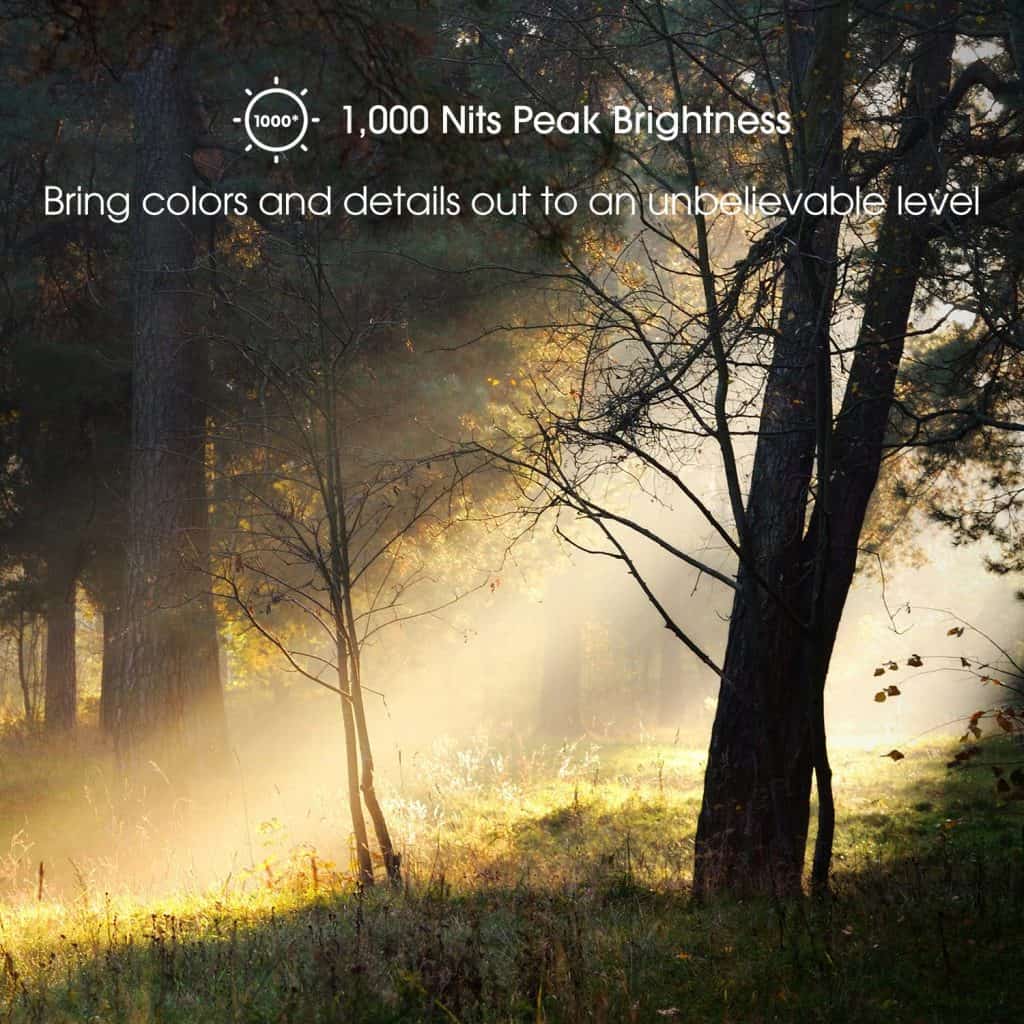
Winner: Hisense
Color
In general, Vizio delivers better picture quality than Hisense. The company always tends to produce TVs with excellent, vivid light and dark colors. However, with Hisense TVs, you might experience issues with color accuracy and color uniformity. Their TVs encounter problems with red ghosting when it comes to fast-moving objects.
Both brands are not that great when it comes to HDR. Even though Vizio is slightly better, both brands are nowhere near the most popular brands like Samsung.
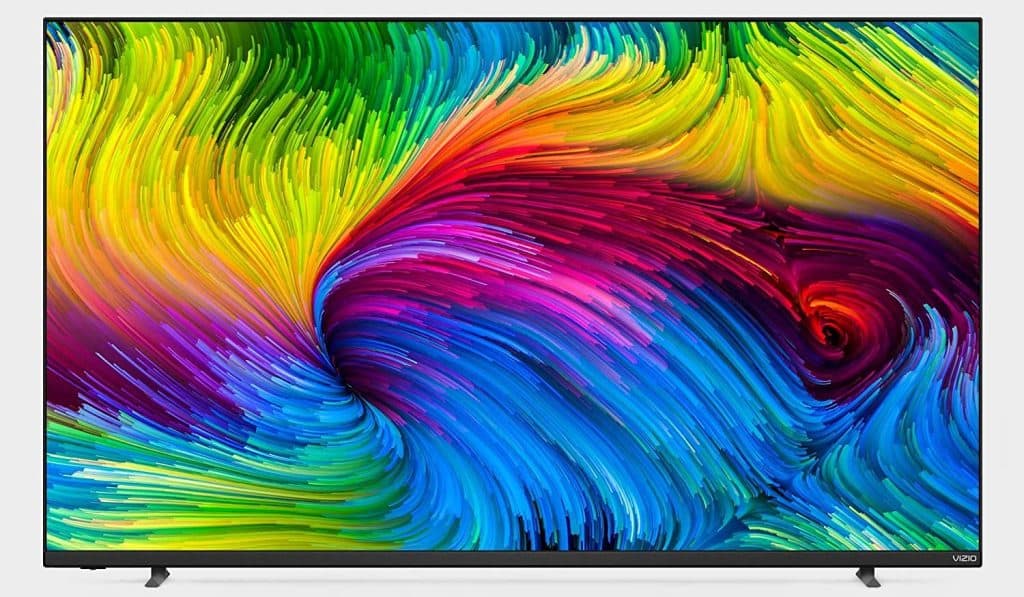
Winner: Vizio
Viewing Angle
Some of the Hisense TVs have narrow viewing angles. This can be an issue if more than one person is watching the TV simultaneously. The image can be distorted when you watch TV from the side. Vizio is better in this segment, primarily the models that use OLED technology which offers wide viewing angles.
Winner: Vizio
Reflections/Anti-glare
Hisense TVs perform well in the bright rooms. So, they are good at handling reflections and glare. Vizio is also good at combating glare and reflection in bright rooms. But if you choose a Vizio TV, you can raise the experience to a higher level by using light sensors. Light sensors measure the lights and then adjust the settings.
But, Hisense produces QLED TVs. In other words, their TVs offer exceptional performance in very bright rooms. So, Hisense is slightly better. But, a Vizio TV is also a good choice because of the light sensors.
Winner: Hisense
Sound Quality
Hisense can’t brag about the sound quality on their TVs. So if the sound quality of internal speakers is something you are looking for, you will not find it in Hisense TVs. For that reason, many people choose to buy a soundbar.
Vizio offers pretty good sound and decent sound technologies. So, Vizio made an effort to provide a better quality of sound.
Winner: Vizio
Smart TV Platform (Operating System)
Hisense TVs come with three different smart TV platforms: Roku TV, Android TV, and VIDAA OS. Each one of these has app stores where you can download popular apps like Netflix or YouTube. However, most of their TVs come with Android. The system works smoothly and is easy to use.
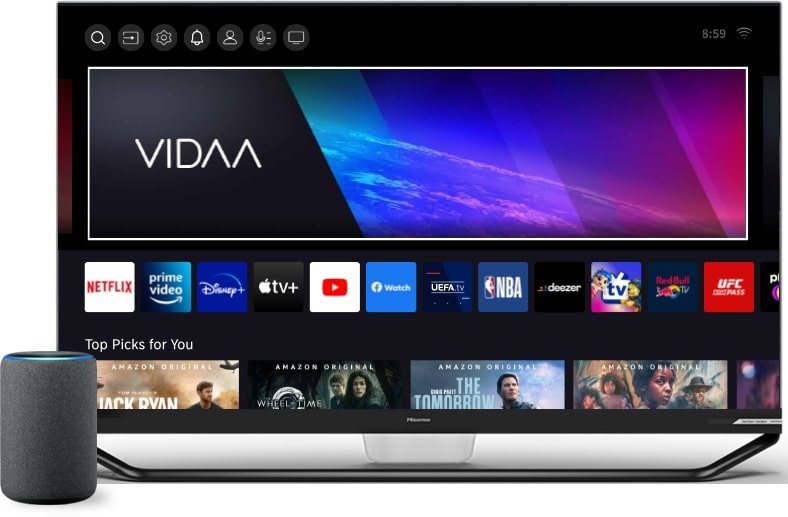
Vizio has a SmartCast TV platform that supports Chromecast and AirPlay2. The downside to this smart TV platform is that it doesn’t have an app store. But it has a lot of included apps such as Siri, Google Assistant, and Alexa.
The SmartCast has had a lot of criticism in the past, but it seems that they are working on improving it. It can be slow sometimes.
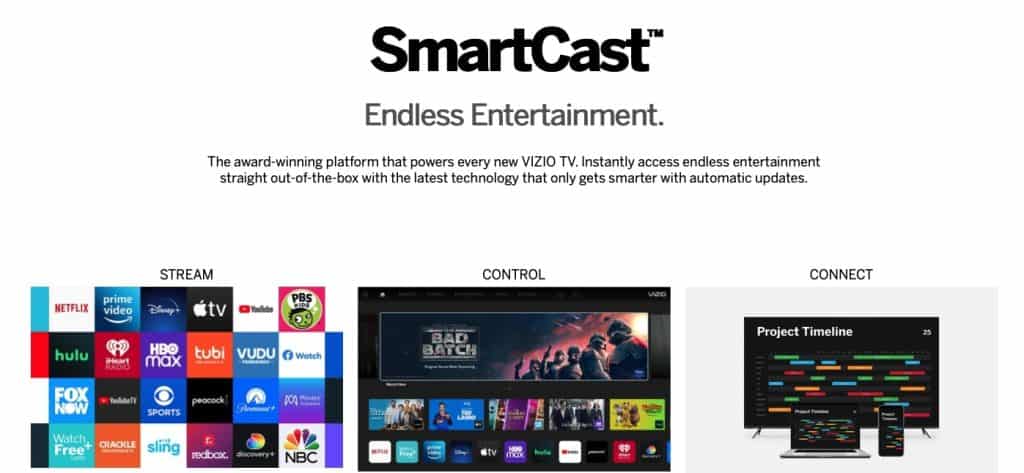
Hisense, on the other hand, excels in this category. They have a better choice of TV platforms and an app store.
Winner: Hisense
Connectivity
Inputs
Hisense TVs usually come with two USB ports and up to four HDMI ports. Vizio TVs usually come with only one USB port and up to four HDMI ports. So, if you have a lot of external devices to connect to a TV, Hisense could be the right brand for you.
Winner: Hisense
Voice Assistants
Hisense TV remote comes with a built-in microphone, and some high-end models come with a built-in microphone. So, voice navigation is relatively easy with Google Assistant or Alexa. Vizio’s SmartCast OS offers Google Assistant, Alexa, and Apple HomeKit.
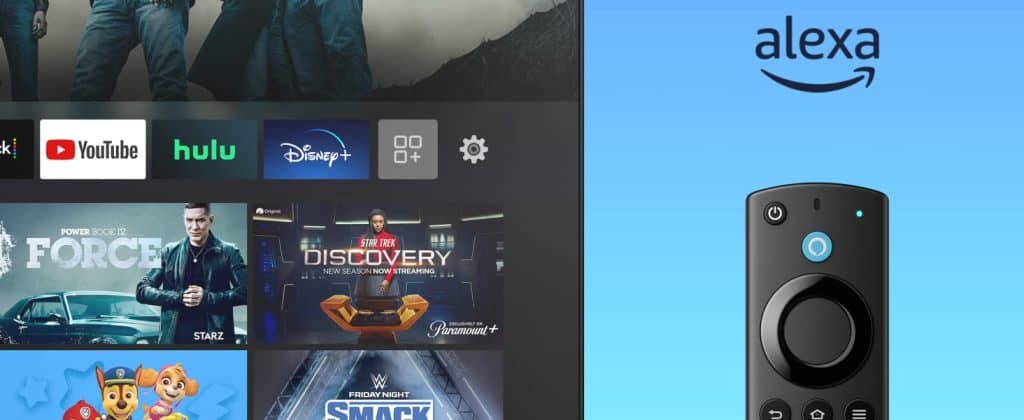
When it comes to remotes, Vizio’s remote supports voice controls, but it is pretty basic. For example, you can open settings and open apps but can’t search the app content. It is better than older Vizio models, but it is not as advanced as other brands.
Winner: Hisense
Wireless technologies
Just like many modern TVs, both Hisense and Vizio TVs can be connected to WiFi. Hisense TVs with Android and VIDAA platforms can pair their devices to their TV via Bluetooth. You can do it easily through the settings on your TV.
On the other hand, Roku TV users don’t have that ability, but there is an option to listen to the TV through the Roku app on your smartphone or tablet.
Vizio has Bluetooth connectivity, but it is limited to Bluetooth LE (Low Energy). So, you can pair only the Bluetooth LE devices.
Both brands offer Bluetooth connection, but it is limited. Since Hisense Android and VIDAA TVs have Bluetooth connectivity, they stand out in this category.
Winner: Hisense
Price
Both of these brands are budget-friendly TV manufacturers, even though they have some premium models. Therefore, price should not be a decisive factor when choosing between these two brands because they stand in the same category.
However, we have decided to compare two TV models in the following table. These are 4K TVs designed for people who are looking for the best value for money. The first model is Vizio M55Q8-H1 and the second is Hisense 55U7G.
| Vizio M55Q8-H1 | Hisense 55U7G | |
|---|---|---|
| Screen type | LED | LCD |
| Screen size | 55 Inches | 55 Inches |
| Size | 48.59 x 30.60 x 10.04 in | 48.3 x 30.6 x 10.1 in |
| Weight | 36.38 lbs | 33.10 lbs |
| Refresh rate | 60 Hz | 120 Hz |
| HDMI ports | 4 (HDMI 2.1) | 4 (2x HDMI 2.1, 2x HDMI 2.0) |
| USB ports | 1 | 2 (1x USB 3.0, 1x USB 2.0) |
| Resolution | 3840 x 2160 | 3840 x 2160 |
| Audio | 10 watts x 2 | 10 watts x 2 |
| MSRP | $549.99 | $750 – $850 |
| Price | Check Price on Amazon | Check Price on Amazon |
Conclusion
Hisense offers excellent value for money and has a range of high-resolution TVs. If you like smart features and apps, then the Android platform would be great for you. But, you will have to accept that they don’t have a great picture or sound quality.
However, Vizio stands out when it comes to picture and sound quality. But, their operating system has a lot of downsides, and it is not as enjoyable to use. Still, Vizio is a better option between the two if you want to use a TV for gaming purposes.
To conclude, here are the results of our Hisense vs Vizio comparison:
Get Hisense TV if you:
- Have a limited budget
- Seek a reliable TV
- Want a lot of Smart features
- Need more than one USB port
- Plan to use Bluetooth earphones
Get Vizio TV if you:
- Intend to use the TV for gaming
- Want to watch TV with friends and family
- Want decent picture and sound quality
- Plan to watch the TV in a dark room
